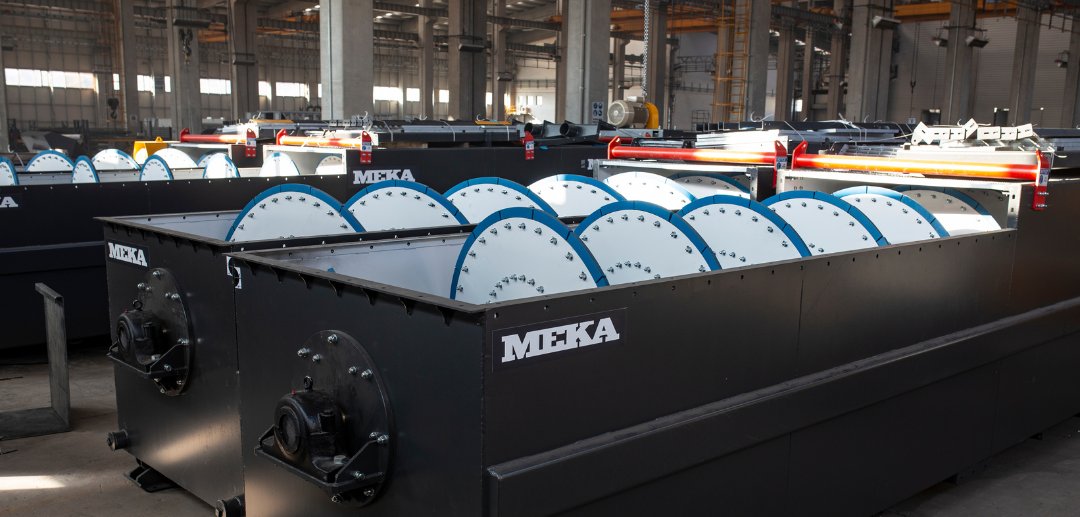Natural Unemployment
It is the minimum level of unemployment that exists in an economy.
Natural unemployment is the minimum level of unemployment that exists in an economy. It is often used as a benchmark to measure the health of an economy.

It is the unemployment of workers who are not actively seeking employment or are not engaged in productive work.
It does not imply that the workers are lazy or lack skills but that the economy's structure or the forces need to provide more jobs for everyone who wants to work.
The natural unemployment rate is the percentage of the labor force that is naturally unemployed.
It includes frictional unemployment, the time it takes to find new jobs, and structural unemployment is brought on by a mismatch between worker abilities and job requirements.
So, what's the relationship between natural unemployment and economic growth? Well, as you might expect, economic growth can help to reduce such unemployment.

When the economy is growing, businesses expand and hire more workers. It means more opportunities for people to find work, and the unemployment rate will decrease.
However, it's important to remember that economic growth is one of many factors that affect unemployment. Other factors, such as changes in technology or the overall structure of the economy, can also impact the unemployment rate.
Nonetheless, the link between natural unemployment and economic development is critical. So, let's examine its origins and implications of it and how economic growth might help eliminate it.
Non-Accelerating Inflation Rate of Unemployment (NAIRU)
This rate is also known as the Non-Accelerating Inflation Rate of Unemployment (NAIRU).

The NAIRU is the unemployment ratio at which inflation is stable. It is sometimes referred to as the "equilibrium" unemployment rate. When the actual unemployment rate exceeds the NAIRU, inflation slows.
The NAIRU is a range rather than a particular figure defining Natural Unemployment and its Relationship to Economic Growth.
Full employment is when all individuals willing and able to work can find a job. This rate is the lowest unemployment rate caused by the labor profitable market operation.
It is made up of frictional unemployment, which results from the time it takes to complete a task for workers to search for jobs, and structural unemployment, which arises from a mismatch between workers' skills and employment requirements.
When it comes to unemployment, there are two types: natural unemployment and economic growth. First, it is when more people are looking for jobs than are available.
On the other hand, economic growth is when the number of jobs available grows faster than the number of people looking for work.
Relationship between Natural Unemployment and Economic Growth
The link between natural unemployment and economic development is critical to comprehend.
The natural unemployment rate is the lowest position of unemployment caused by natural or spontaneous socioeconomic development.

It excludes unemployment caused by frictional or defined patterns. As a result, the raw unemployment number is frequently referred to as the "full employment" rate.
The natural unemployment rate is not zero because there is always some amount of frictional unemployment, which is the unemployment resulting from the time needed to match workers with available jobs.
And structural unemployment results from an incompatibility between the skills of workers and the requirements of available jobs.

The rate is usually between 4% and 6%.
It means that the economy is expanding and creating jobs if the actual unemployment rate is below the natural unemployment rate. Conversely, the economy is contracting and losing jobs if unemployment exceeds it.
It can also cause political problems. For example, if the government does not provide enough jobs, people may become frustrated and protest. It is leading to riots and other forms of civil unrest.
Additionally, high levels of unemployment can lead to a decrease in tax revenue, which can further strain the government's ability to provide services.
The Cause of NU and its Impact on Economies
It is caused by several factors, including frictional unemployment, the time it takes workers to find new jobs after losing their old ones, and structural unemployment, which is caused by a mismatch between employees' talents and the needs of employers.

Apart from that, a few of the reasons for the causes and impacts are:
1. It can also be caused by macroeconomic factors, such as a recession, reducing worker demand.
2. It threatens economic growth because it can lead to higher prices and wages, reducing spending and investment.
It is because more people are applying for fewer jobs when unemployment is high. It can lead to lower wages as employers have more bargaining power. Lower salaries can lead to less spending, as people have less money to spend.
It can lead to less investment, as businesses have less money. All of these elements can contribute to a decrease in economic growth.
While it can harm economies, it can also lead to positive outcomes. For example, it can motivate workers to gain new skills or look for new job opportunities.
It may also cause modifications to the labor market that make it easier for workers to find new jobs, such as increased job flexibility or reduced job openings.
The Different Types of Unemployment and what are their Solutions?
There are four main components. These are frictional, structural, cyclical, and seasonal unemployment. They differ from one another; hence; unique solutions are required to solve these contrasting cases:
1. Frictional unemployment:
It occurs when employees are between jobs or looking for their first job. It is normal and doesn't harm the economy. It is always present in the economy.
It is the only type of unemployment that declines during a recession since people prefer job security at such times.
Through job searching websites and social media, workers can search for desired jobs and get hired quickly, which helps to reduce frictional unemployment.

2. Structural Unemployment:
Structural unemployment can be a severe problem because workers can take a long time to find new jobs.
When there is a misalignment between the supply and demand for labor, this is referred to as structural unemployment. It can be caused by technological change or a change in the location of jobs.
It occurs when the economy is going through a downturn, and there are not enough jobs for everyone who wants one. This type of unemployment can be very damaging to an economy.
4. Seasonal unemployment:
It occurs when jobs are only available at certain times of the year, such as during the summer or winter. This type of unemployment is customary in some industries, such as agriculture.
Policies that can help reduce such unemployment will vary depending on the country and its economy. However, some examples of policies that have been effective in lowering it in other countries include the following:

- They are investing in education and learning initiatives to help employees keep their skills up to date and maintain employment.
- We are offering financial incentives to businesses that create new jobs.
- Implementing active labor market policies that help match workers with available jobs.
- We are reducing barriers to entrepreneurship and business creation.
The Pros and Cons of NU and its Effect on Society
The percentage of unemployed people in the working population is known as the unemployment rate. It is derived by dividing the ratio of jobless persons by the additional labor force population.
The unemployment rate is a barometer of economic health, and financial experts use it to evaluate whether the economy is strengthening or decreasing.

There are a few scenarios when this unemployment has its pros too. However, when examined through the perspective of the national budget, the socioeconomic implications of unemployment are likely to be more visible.
Unemployment may result in increased payments from the provincial and territory governments for unemployment insurance, food grants, and Healthcare.
A significant rate of unemployment has a wide-ranging impact on the economy.
Unemployed individuals typically spend very little and accumulate more credit, and unemployment may result in increased contributions from the federal and state governments for benefits such as food stamps.
There are various obstacles to minimizing it, which serve as cons of unemployment.

One difficulty is that identifying the elements that contribute to such unemployment might be challenging.
Another challenge is that some factors contributing to it may be difficult or impossible to change. For example, changing the number of people retiring or entering the workforce may take time.
Additionally, some factors contributing to this unemployment may be outside of policymakers' control. For example, economic conditions, such as the overall level of economic activity, can influence the natural unemployment rate.
What are the Potential Implications of Failing to Reduce this rate?
If it is not reduced, there could be several implications. Some of them are mentioned below.

- Unemployment rate stunts growth, wage growth, and overall prosperity.
- High unemployment leads to increased social problems, crime, homelessness, and political instability. These problems can harm a country's economy and standard of living.
- The production gap grows and decreases in lockstep with the economy. The economy's materials and labor market are underused whenever the production difference is negative.
- When the production gap is positive, the market overuses resources, and the economy becomes unsustainable. Whenever the rate of unemployment declines, this happens.
- When the unemployment rate goes below the natural level of unemployment, a deleterious unemployment difference arises, and inflation is likely to rise.
- Inflation is projected to slow whenever the unemployment figure surpasses the average unemployment level, a condition known as a favorable unemployment discrepancy.
- Rising labor needs cause wage inflation as the level of joblessness falls. With fewer individuals accessible to engage, firms must raise pay to entice and keep competence.
As a result of rising salaries, most local businesses are forced to hire from a less qualified demographic, lowering output.
The Future of the rate and The Labor Market in the Age of Automation and its Impact
The future of this unemployment is uncertain. However, if it increases, it could harm the economy. Higher levels of unemployment would mean less spending and less economic activity. It could lead to a recession or even a depression.

Its impact on the economy is a significant concern for policymakers. If the unemployment rate increases, it can lead to a decrease in economic growth. Additionally, the poverty rate can increase if the number of people employed drops.
There are numerous strategies to mitigate its economic impact of it. One approach is to help the unemployed. It might include unemployment compensation, job training, or other support.
Another strategy to mitigate the economic repercussions is to minimize the number of new competitors in the labor market. It can be accomplished by raising the superannuation age or increasing the number of persons pursuing postsecondary education.
The job market's future in the aftermath of automation is unknown. However, job loss due to automation is becoming a significant problem, especially in industrialized nations where mechanization is more prominent.

Various variables will influence the labor market's future, including the rate at which automation is adopted, the employment displaced by automation, and the government's policies regarding industrialization.
It's impossible to say how automation will affect the labor market shortly. However, automation will significantly influence the economy and labor. Workers will be required to adapt to new technology and find new employment as more jobs are automated.
The automation adoption rate, the sorts of occupations replaced by technology, and government regulations in reaction to automation will all impact the labor market's future.
The work market's future is unknown, but automation will have a considerable influence.
Job Loss Due to Technological Advancements and The Role of the Government in Mitigating it
The advancement of technology has harmed the economy in terms of job loss. Technology has made many jobs obsolete and has made it easier for companies to outsource labor to cheaper markets.

It has led to a significant decrease in demand for work in developed economies and has resulted in rising unemployment.
The effect of this on the economy is two-fold. Firstly, it decreases consumer spending and demand as people have less money to spend. As a result, output and GDP have diminished.
Secondly, it leads to an increase in social welfare costs as the government has to provide more support to those who are unemployed.
In the long term, this can decrease the standard of living as people have less money to spend on goods and services. In addition, it could boost crime as people turn to illegal activities to make money.

The role of the government in mitigating unemployment can be significant. The government can help create jobs and provide training and support to unemployed people.
It can also provide financial assistance to help people cover their costs while looking for work.
The government can also help create an environment conducive to job creation by providing infrastructure and supporting businesses.
Any beneficial employment benefit is contingent on increasing total working hours while decreasing hourly earnings and maintaining a stable monthly income. Other situations, though, are feasible.
Long term, worker legislators may advocate for an increase in hourly pay. Furthermore, the drop in overtime may entirely balance the rise in ordinary hours, resulting in workers receiving a comparable total number of hours and a monthly payment package.
The extension of regular working hours seems to be independent of this scenario.

Several requirements must be satisfied for an increase in conventional working hours to be beneficial to employees.
Instead of pushing for worldwide working time modifications, it may be preferable to include versatility concerning employment commitments to allow enterprises to consider the circumstances at the company level and diverge (to some amount) from collaborative negotiating agreements.
In conclusion, there is a strong relationship between natural unemployment and economic growth. When the economy is rapidly flourishing, the natural unemployment rate is low, as there are more opportunities for workers to find employment.
However, when the economy slows down, the crude unemployment rate increases as fewer opportunities exist for workers to find a job.
- The NAIRU is the unemployment ratio at which inflation is stable. It is sometimes referred to as the "equilibrium" unemployment rate.
- It threatens economic growth because it can lead to higher prices and wages, reducing spending and investment.
- It can also be caused by macroeconomic factors, such as a recession, which can reduce worker demand.
- While it can harm economies, it can also lead to positive outcomes. For example, it can motivate workers to gain new skills or look for new job opportunities.
- Unemployment may result in increased payments from the provincial and territory governments for unemployment insurance, food grants, and Healthcare.









or Want to Sign up with your social account?